We explored more than just Death Valley on this trip, but we spent the most time there after having such a great time back in 2017. Here are the last of the photos and stories from this year’s adventure.
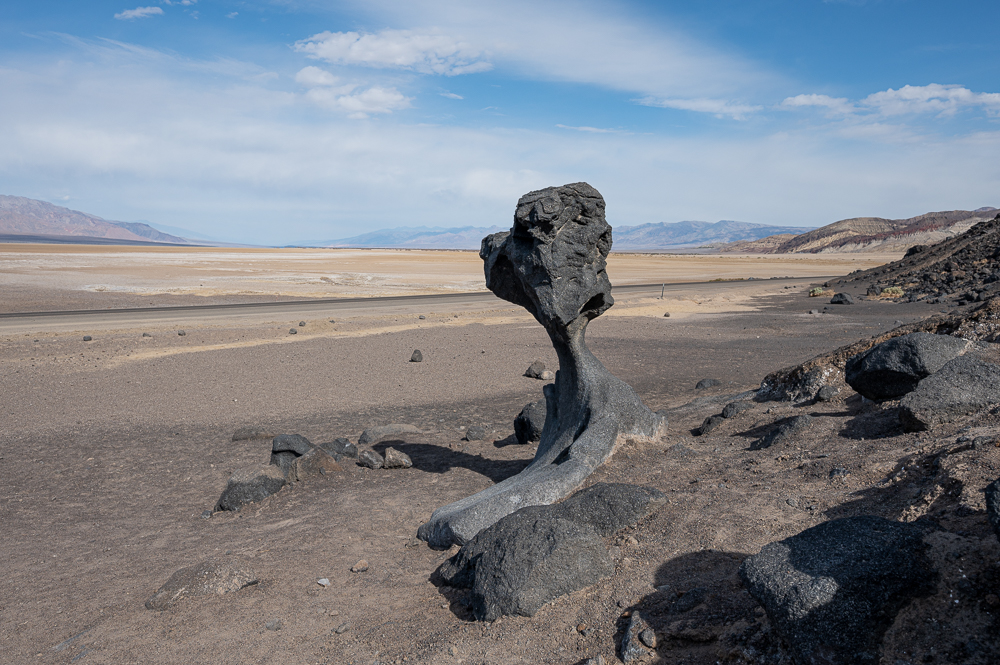
Of course we had to visit the Devil’s Golf Course – it’s just too stark and weird and inhospitable not to see.
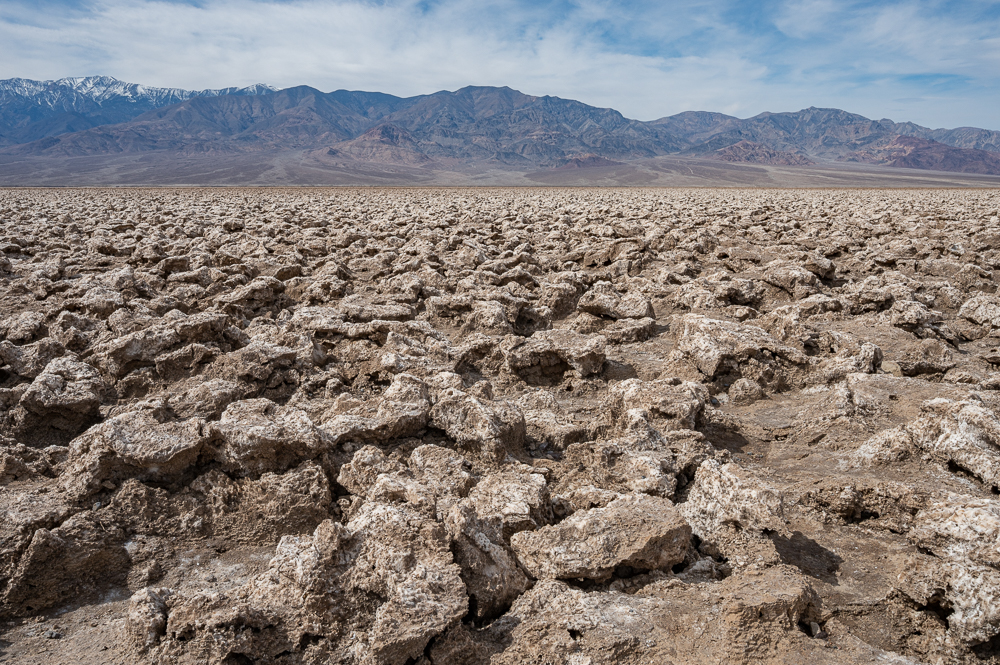
Another bit of Death Valley history happened when borax was found in the valley in the 1880s, and was mined and processed there for several years. Unfortunately, heat in the summer made processing impossible so the mine and processing was abandoned after only five years. However, the iconic “20 Mule Team” brand of borax (sold primarily as a laundry additive, but it has other uses) is still sold today, and the brand refers to the massive mule teams needed to haul the borax from Death Valley, up and over the mountains to market.
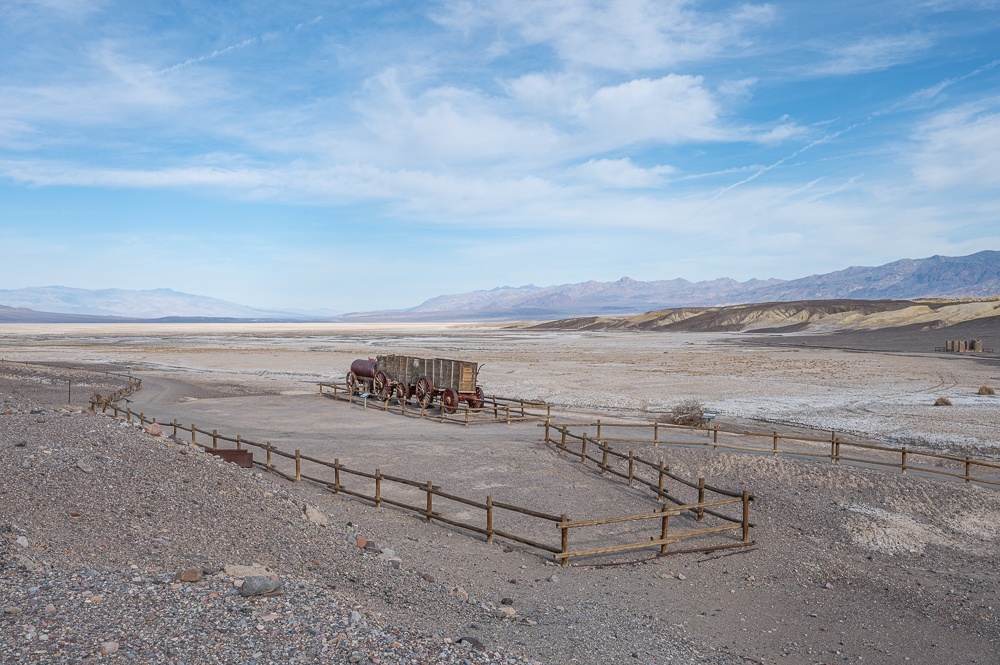
Another marvel in Death Valley’s harsh climate is the existence of natural springs and the endemic pupfish. Salt Creek is one of the few remaining wetland areas since Death Valley’s more plentiful marshes and lakes disappeared about 15,000 years ago.
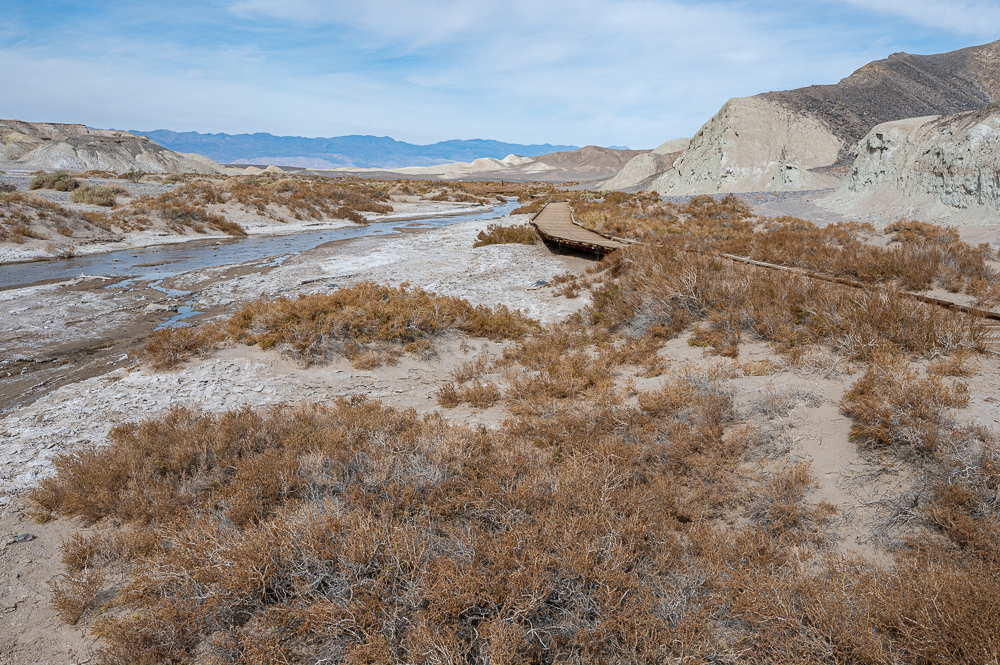
What makes the creek truly fascinating is the presence of little inch-long pupfish that have evolved to be a unique sub-species. Some other isolated bodies of groundwater in the Mojave desert also have pupfish populations, but each has evolved to adapt to its local conditions. Imagine – these little fish live in water that is 2.5 times saltier than the ocean, and where water temperatures can spike to 107 degrees (F). They may be little fry, but they’re tough!
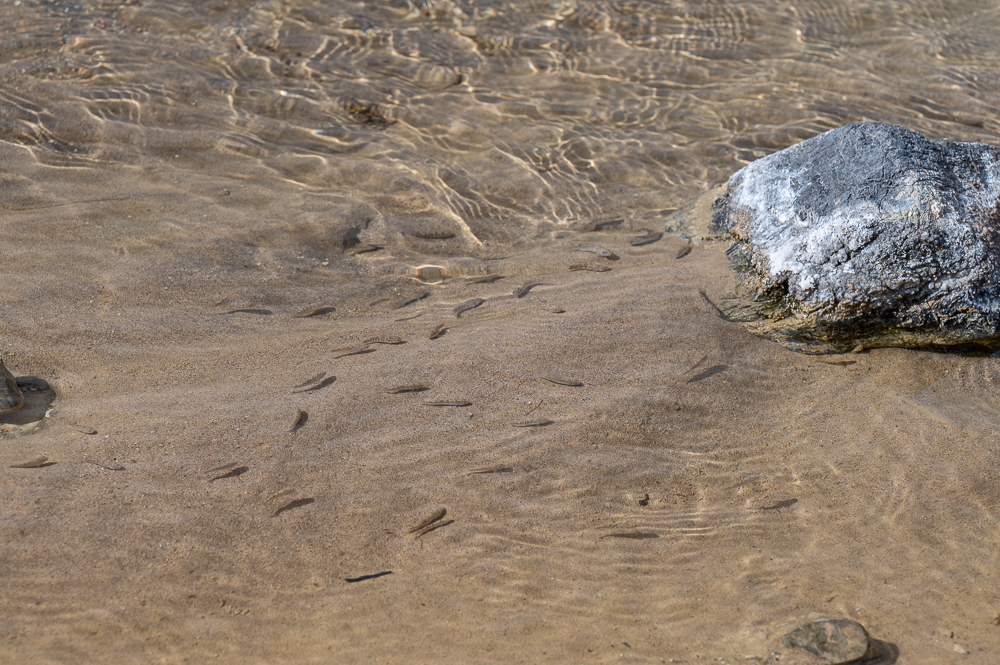
Since we’ve visited the park once before, we wanted to find new places to explore, particularly off the beaten path. A ranger recommended Room Canyon, well past all the popular spots, and towards the south end of the park.
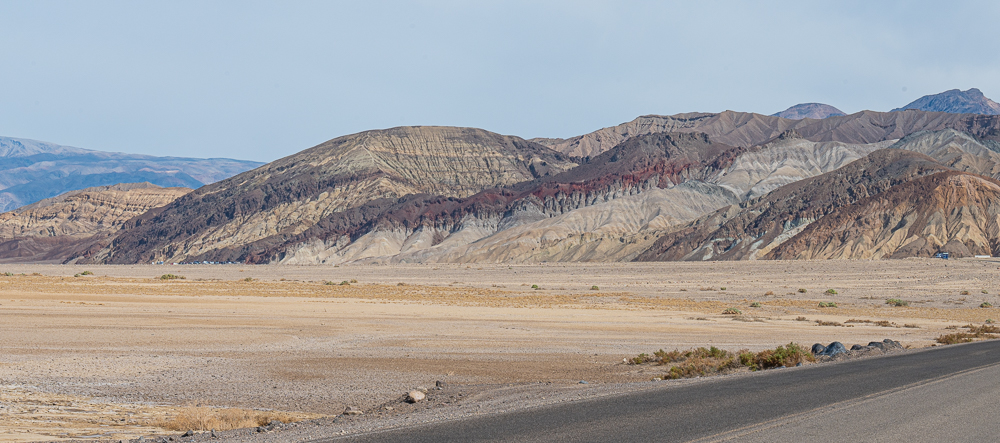
The trailhead was vaguely located at a mile marker along the road, and the directions said to trek across open land for almost a mile and a half to find a small promontory that marks the actual canyon. The open land was cut by dry washes, rocks and scattered scrub, but we tended to stay in the larger washes and we eventually spotted the canyon’s entrance.
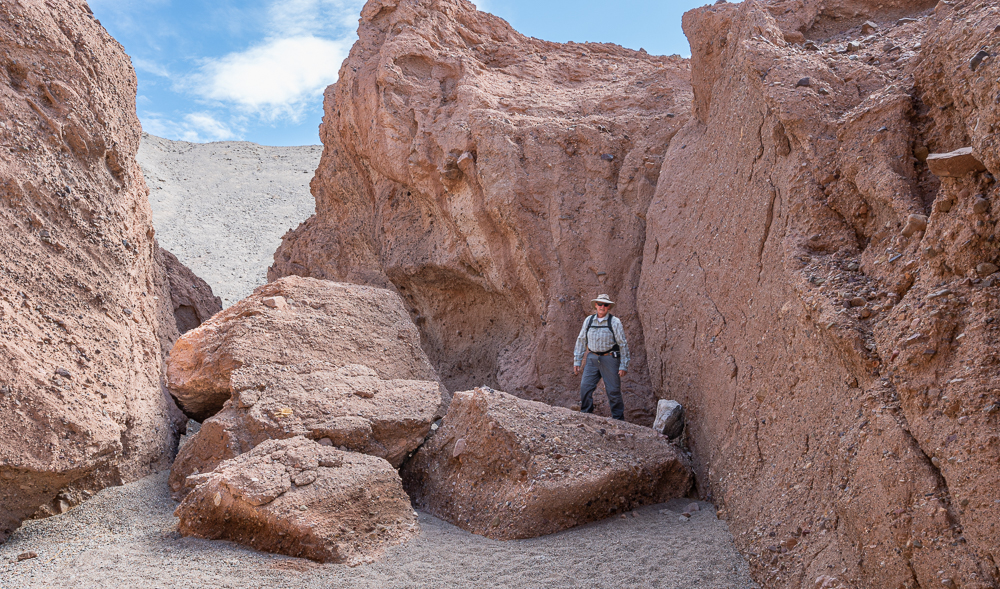
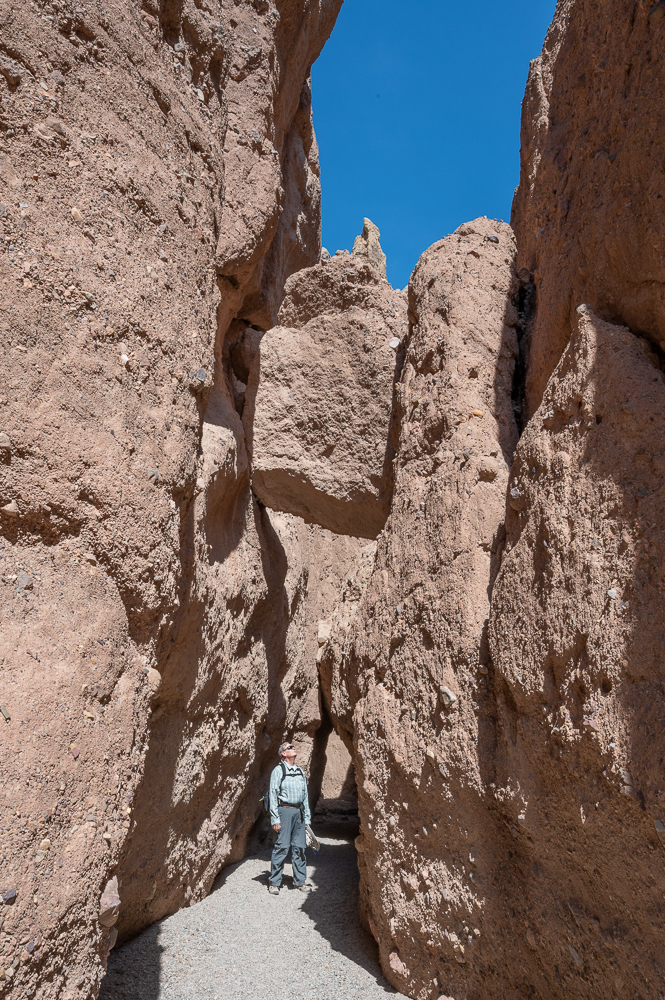
It was a really neat area, eventually opening up into a bigger space with a few wildflowers to remind us that there really is a lot of life in Death Valley.
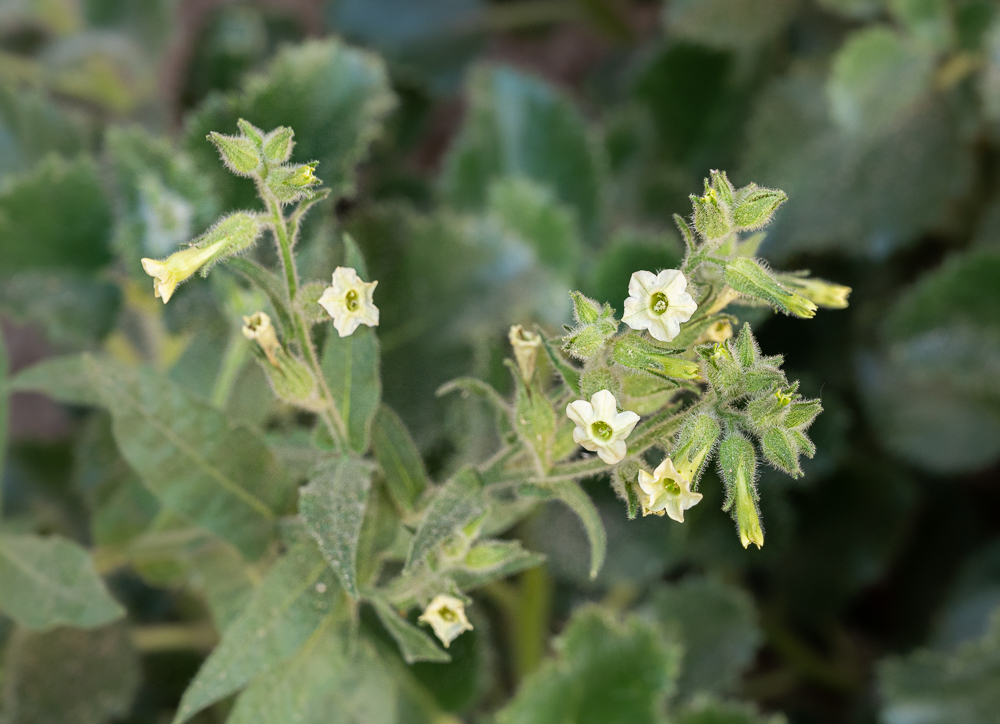
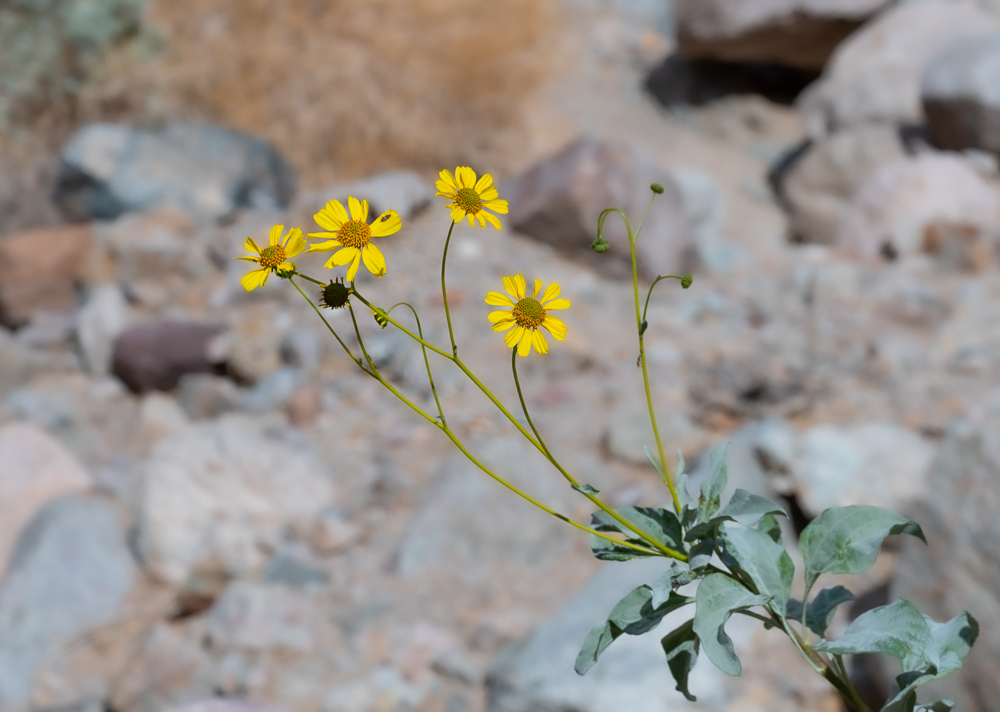
Flowers were a welcome splash of color, but the rocks continue to dazzle with interesting shapes and colors too.
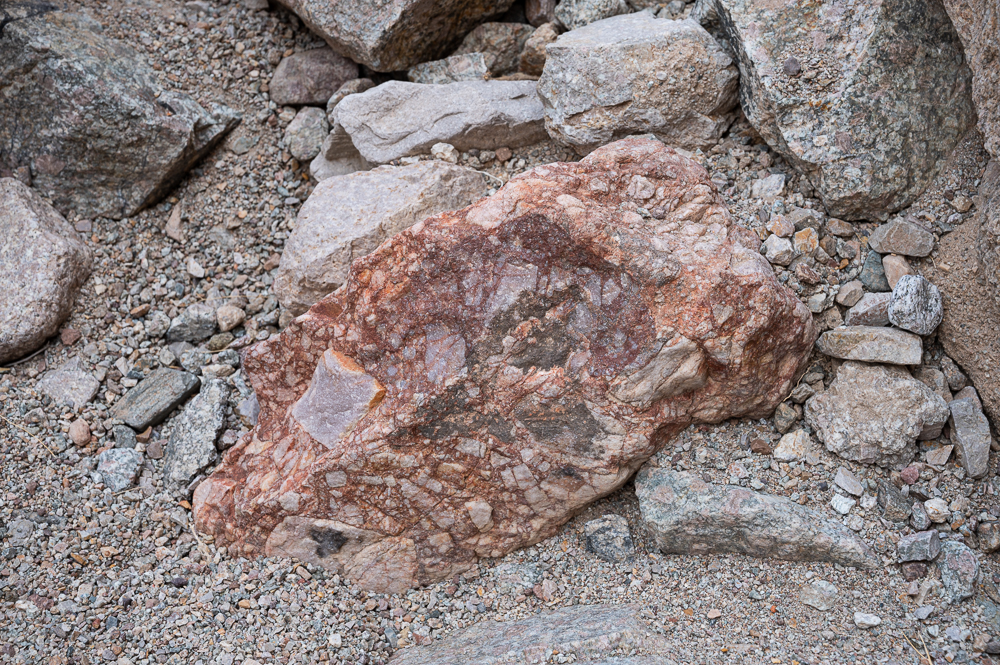
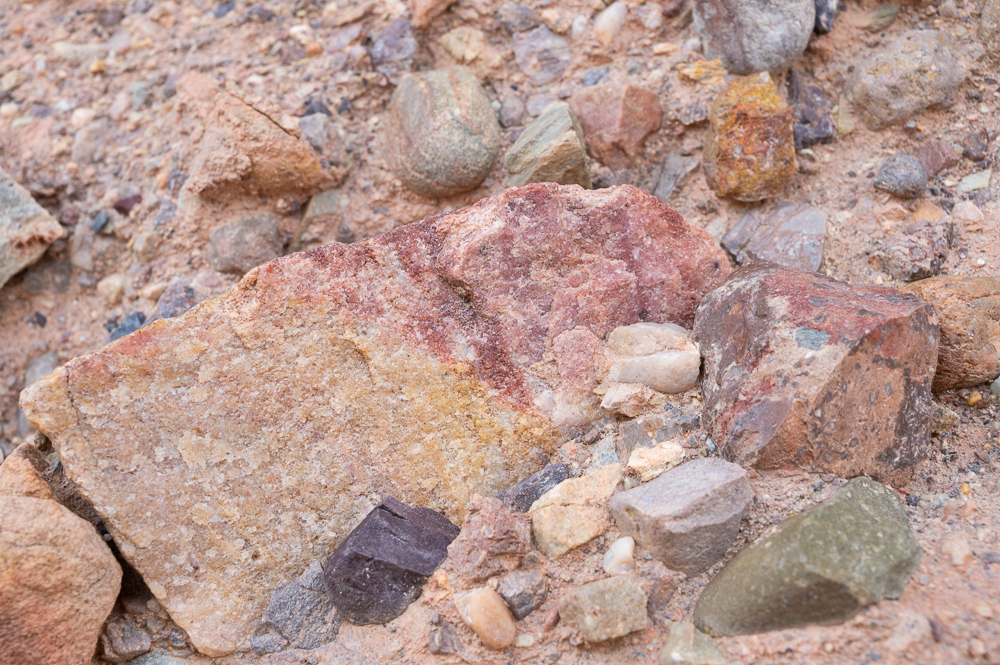
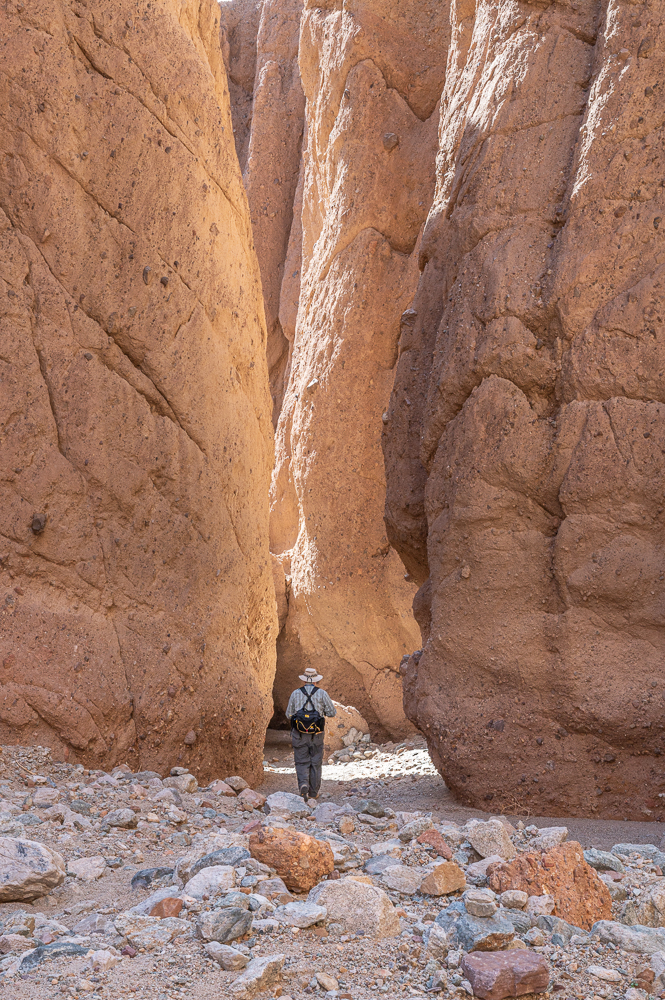
After a few hours of exploration, we decided to venture farther south, out of the park. We ran into a nice couple on another trail earlier in the week, and they recommended a visit to China Ranch – a date farm in the middle of nowhere. With the description of delicious date shakes on our minds, we set out to see if we could find some cold treats on a warm day. The drive south was gorgeous, with ever-changing colors and formations, eventually giving way to a few small clusters of scruffy civilization scattered in the desert. We followed the sun-faded signs down a twisting dirt road into an improbable barren canyon, and at the bottom, the fields of date palms were a happy surprise to see. The date shakes lived up to their billing, and we bought a pound of dates in different varieties to take home too. You just never know what you’re going to find – that’s the fun of exploring, and of following the suggestions made by nice people you meet on the trail.
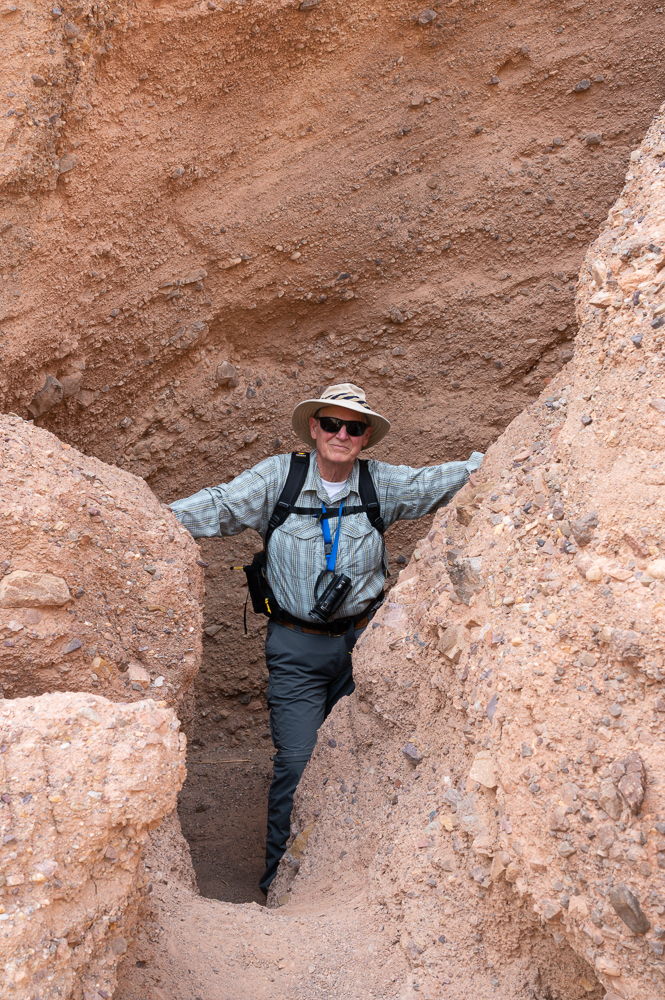
We capped off the trip with a sunset at Zabriskie Point, a nice viewpoint, probably better suited for sunrises than sunsets, but we didn’t want to get up that early.
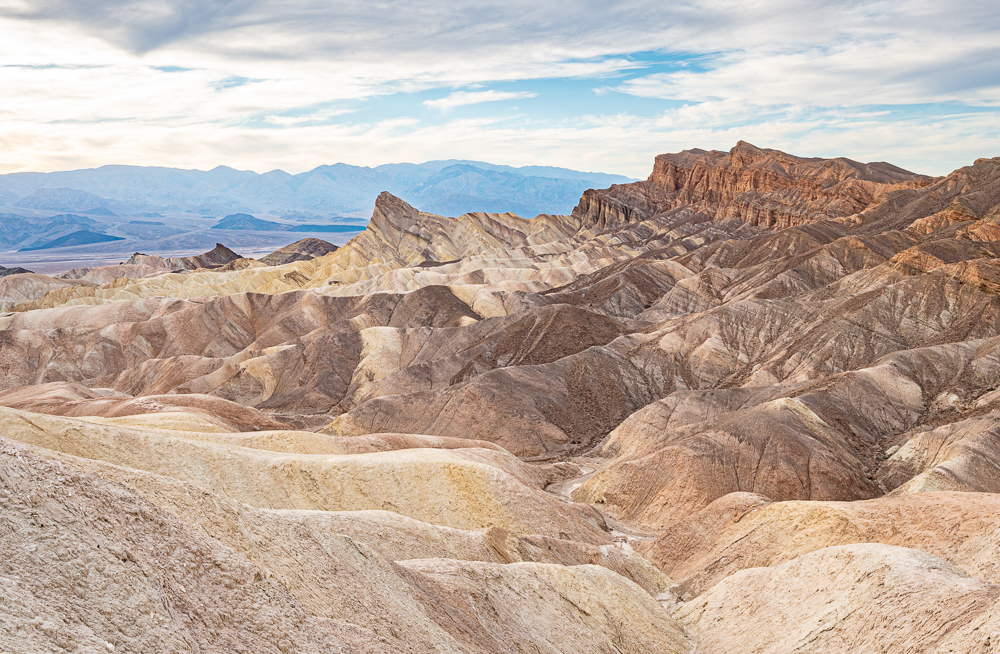
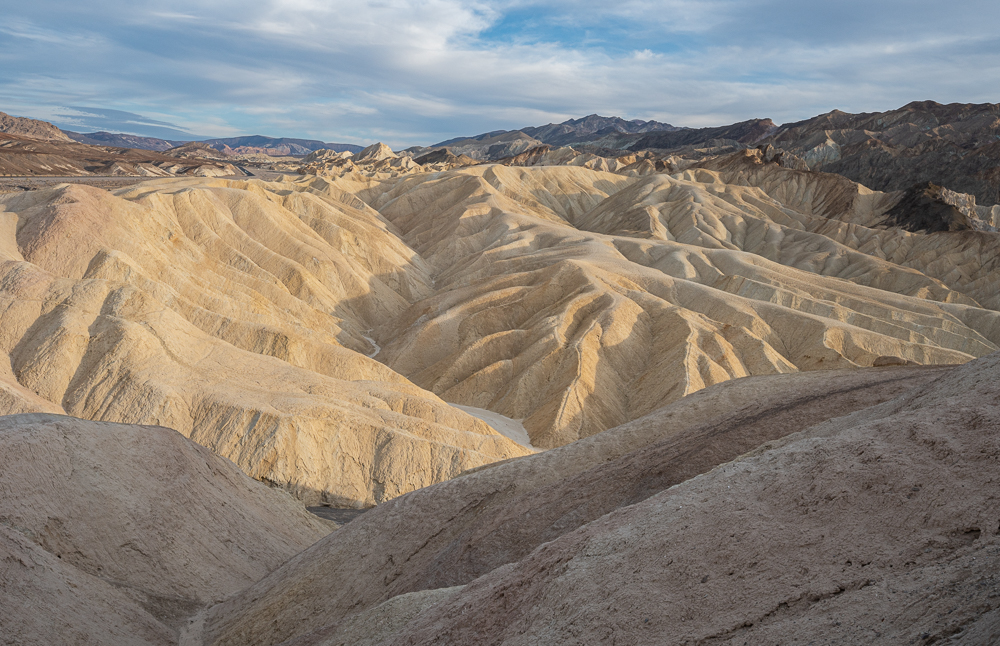
In the next post I’ll show you a very different place about 100 miles from Death Valley – Manzanar National Historical Site. Still no bears. Stay tuned.
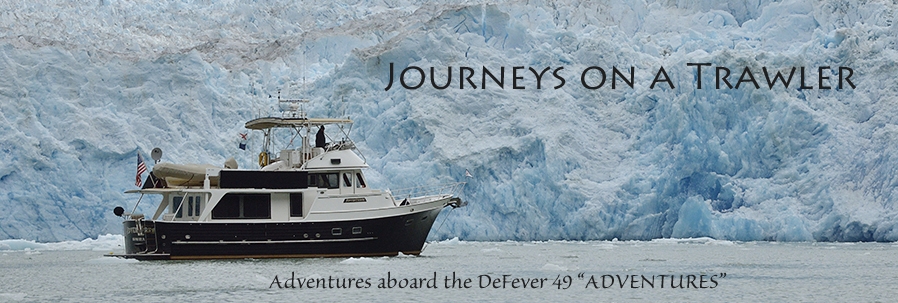
Thanks, Robin and Jim, for sharing one of the best gems in America’s National Park system. These photos wet ones appetite for a park you just have to experience in person to truly appreciate the variety of remarkable experiences that beckon to be explored.